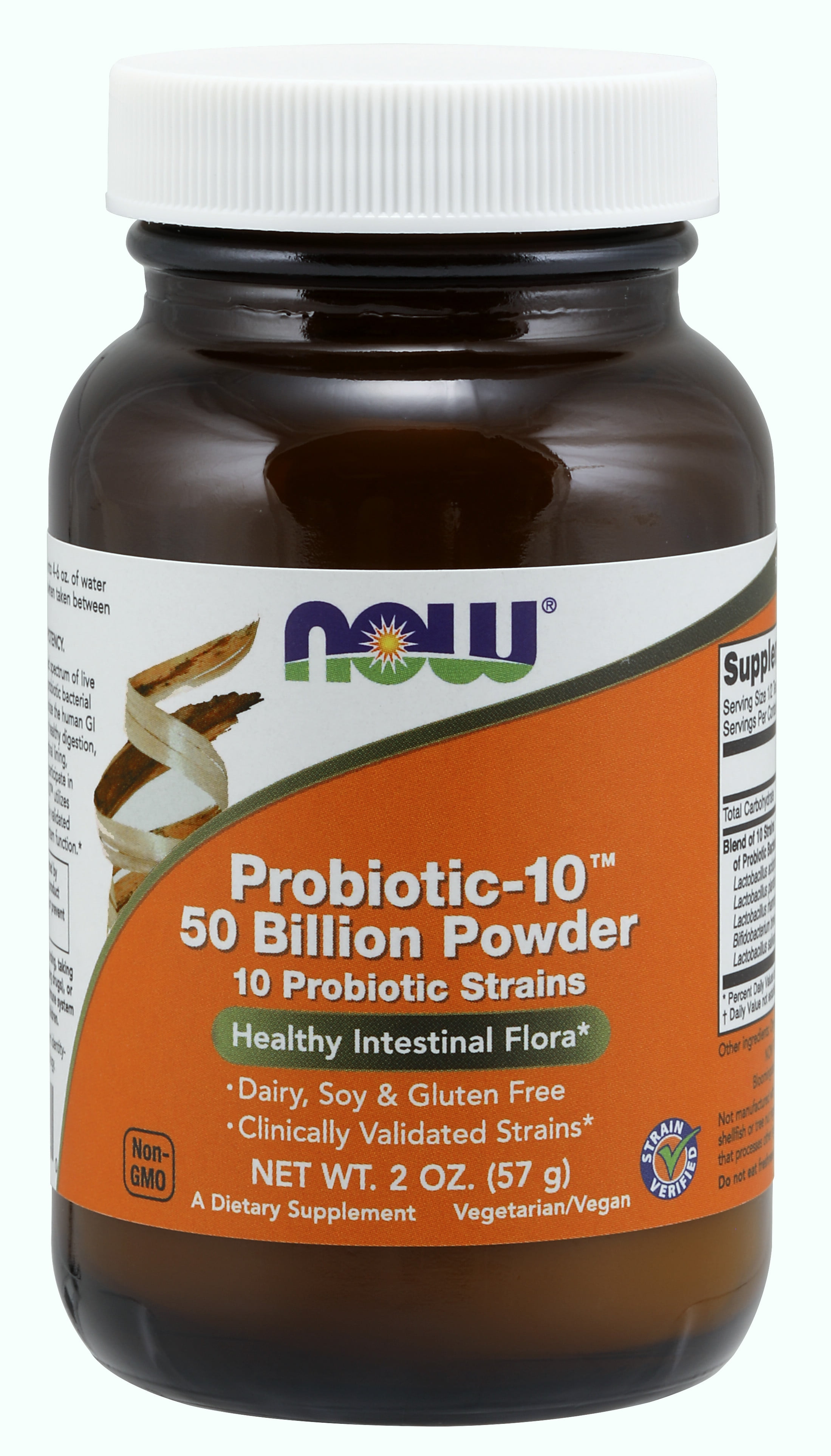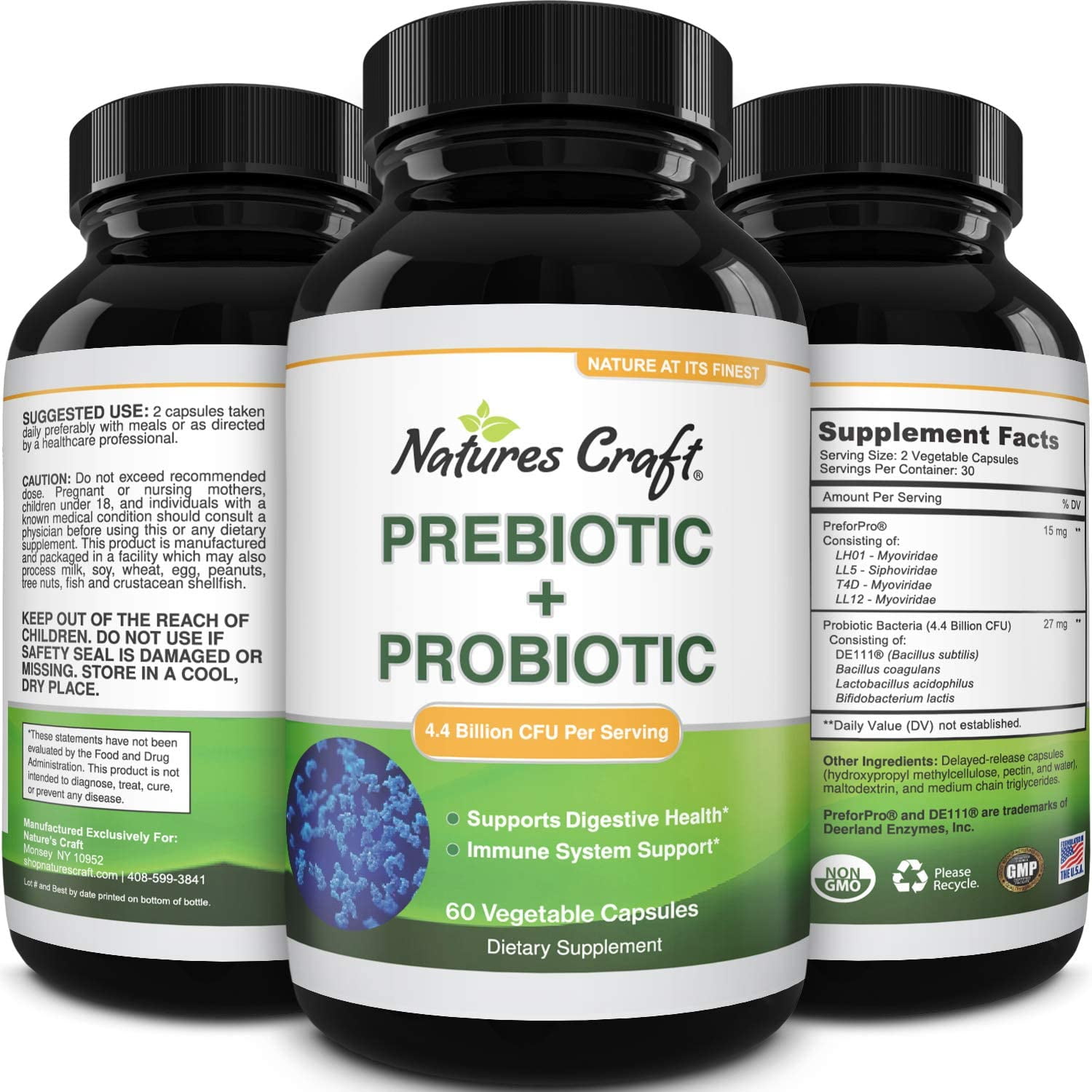The intestinal microbial community is a complex ecosystem, and introducing new organisms into this highly competitive environment is difficult. Thus, organisms that can produce a product that inhibits the growth of existing organisms have a characteristic advantage.
 The ability of probiotics to establish in the gi tract is enhanced by their ability to eliminate competitors. Some antimicrobials with producer organisms are enlisted in table 3. In different studies on humans and animals, beneficial microorganisms are used to improve the colonization resistance on
body
surfaces, such as gi, the urogenital, and the respiratory tract. Bifidobacteria produce acetic and lactic acids in a molar ratio of 3 : 2 ( desjardins & roy, 1990 ).
The ability of probiotics to establish in the gi tract is enhanced by their ability to eliminate competitors. Some antimicrobials with producer organisms are enlisted in table 3. In different studies on humans and animals, beneficial microorganisms are used to improve the colonization resistance on
body
surfaces, such as gi, the urogenital, and the respiratory tract. Bifidobacteria produce acetic and lactic acids in a molar ratio of 3 : 2 ( desjardins & roy, 1990 ).
Do I need to take probiotics after I take antibiotics?
Antibiotic-associated diarrhea
probiotics have been studied for antibiotic-associated diarrhea in general, as well as for antibiotic-associated diarrhea caused by one specific bacterium, clostridium difficile. This section discusses the research on antibiotic-associated diarrhea in general. C. Difficile is discussed in a separate section below. A 2017 review of 17 studies (3,631 total participants) in people who were not hospitalized indicated that giving probiotics to patients along with antibiotics was associated with a decrease of about half in the likelihood of antibiotic-associated diarrhea.
 However, this conclusion was considered tentative because the quality of the studies was only moderate. Patients who were given probiotics had no more side effects than patients who didn’t receive them.
However, this conclusion was considered tentative because the quality of the studies was only moderate. Patients who were given probiotics had no more side effects than patients who didn’t receive them.
Probiotics help the body achieve and maintain a healthy balance of bacteria, especially in the lining of your gut. They can also help restore the “good” bacteria in your body that get wiped out after taking antibiotics (which unfortunately don’t differentiate between good bacteria and the infection-causing ones), ultimately protecting the gut from more harmful bacteria and strengthening the gut microbiome overall.
In europe, probiotics are considered food supplements and such products cannot be labelled as probiotics at present. Research has shown that some probiotics can help to improve diarrhoea caused by infection or by treatment with antibiotics. Probiotics might also relieve some digestive symptoms. At present, there isn’t enough evidence to support other health claims or probiotics, or the evidence for their usefulness is inconclusive. Probiotics are generally considered safe for people with a normal immune system. If you want to try a probiotics for a health problem, you should ask your gp or dietitian for advice. The specific type of bacteria, dose and composition of the probiotic are important.
The human digestive tract is naturally colonized with healthy, probiotic bacteria such as lactobacillus acidophilus, lactobacillus plantarum and lactobacillus casei. These bacterial colonies can become depleted due to illness, poor diet, or certain medications — especially antibiotics. When your digestive tract becomes depleted of healthy bacteria, you may have symptoms of poor gut health, like upset stomach, bloating and constipation. Probiotics can help re-colonize your digestive tract with healthy bacteria, relieving these symptoms. Probiotics can also be helpful for people with diagnosed digestive conditions, most notably, irritable bowel syndrome. Studies have shown that probiotics can help slow down the rate at which digested passes through the colon, which improves stool quality and eases other ibs symptoms like bloating, flatulence and cramping.
Should I try probiotics?
โพรไบโอติกส์ (probiotics) และพรีไบโอติกส์ (prebiotics) สองคำนี้เหมือนกันหรือไม่? ในร่างกายของเรานั้นมีจุลินทรีย์อาศัยอยู่เป็นจำนวนมาก โดยมีทั้งจุลินทรีย์ที่เป็นประโยชน์ จุลินทรีย์ที่ไม่ก่อประโยชน์และโทษและจุลินทรีย์ที่ก่อให้เกิดโทษต่อร่างกาย หากเกิดความผิดปกติในร่างกาย อาจส่งผลต่อสมดุลของจุลินทรีย์ที่อาศัยอยู่ในทางเดินอาหาร ปัจจุบันมีผลิตภัณฑ์มากมายในท้องตลาดเกี่ยวกับการรักษาสมดุลของจุลินทรีย์ในร่างกาย โดยคำคุ้นหูที่ถูกกล่าวถึงบ่อยครั้งคือ “โพรไบโอติกส์” และ “พรีไบโอติกส์” มีความแตกต่างกัน ดังนี้ โพรไบโอติกส์ (probiotics) เป็นจุลินทรีย์ขนาดเล็กซึ่งจัดเป็นกลุ่มจุลินทรีย์ชนิดดี สามารถพบได้ในอาหาร เช่น นมเปรี้ยว โยเกิร์ต กิมจิ มิโสะ เป็นต้น ผู้เชี่ยวชาญด้านทางเดินอาหาร ให้คำจำกัดความว่า โพรไบโอติกส์ คือ “จุลินทรีย์ที่มีชีวิต เมื่อรับประทานเข้าไปแล้วจะทำให้สุขภาพดีในภาวะต่างๆ โดยเป็นจุลินทรีย์ที่มีคุณสมบัติทนต่อกรดและด่าง สามารถจับที่บริเวณผิวของเยื่อบุลำไส้แล้วผลิตสารต่อต้านหรือกำจัดเชื้อจุลินทรีย์ชนิดอื่นๆ รวมถึงก่อให้เกิดประโยชน์ต่อสุขภาพได้” พรีไบโอติกส์ (prebiotics) คืออาหารชนิดหนึ่ง เป็นสิ่งไม่มีชีวิต ซึ่งร่างกายไม่สามารถย่อยและดูดซึมได้ที่ลำไส้เล็ก อาหารเหล่านี้จึงสามารถเข้าสู่ลำไส้ใหญ่ได้ในรูปไม่เปลี่ยนแปลง และจะถูกย่อยสลายโดยแบคทีเรียโพรไบโอติกส์ ทำให้กระตุ้นการเจริญเติบโตและการทำงานของแบคทีเรีย พบได้ในหัวหอม กระเทียม ถั่วเหลือง ถั่วแดง ไฟเบอร์ในผักและผลไม้ต่าง ๆ เป็นต้น กล่าวง่ายๆ ก็คือ พรีไบโอติกส์เป็นอาหารของโพรไบโอติกส์นั่นเอง ดังนั้นหากรับประทานอาหารพวกพรีไบโอติกส์ก็จะช่วยส่งเสริมฤทธิ์โพรไบโอติกส์ได้ดียิ่งขึ้น โพรไบโอติกส์จัดเป็นจุลินทรีย์ที่ให้ประโยชน์แก่ร่างกาย เรียกได้ว่าเป็นจุลินทรีย์ประจำถิ่นหรือ normal flora อย่างหนึ่งในทางเดินอาหาร หากร่างกายมีสุขภาพดีก็จะมีการรักษาสมดุลจุลินทรีย์ให้เป็นปกติ แต่ถ้าหากมีอะไรไปรบกวนสมดุลจุลินทรีย์ในร่างกาย จุลินทรีย์ประจำถิ่นในลำไส้ถูกรุกราน อาจเกิดผลกระทบตามมาได้ ลองจินตนาการดู หากร่างกายได้รับยาปฏิชีวนะเป็นระยะเวลานาน ยาเหล่านี้ส่งผลให้จุลินทรีย์ในร่างกายมีจำนวนลดลง เมื่อร่างกายมีการรับเชื้ออื่นซึ่งอาจก่อโรคเข้ามา อาจมีโอกาสสูญเสียจุลินทรีย์ดีในร่างกายได้ ดังนั้นการสร้างสภาวะความสมดุลระหว่าง normal flora และร่างกายนั้นจึงมีความสำคัญ ซึ่งการรับประทานโพรไบโอติกส์จึงเป็นทางเลือกอย่างหนึ่งในการเสริมจุลินทรีย์ชนิดดีและรักษาสมดุลจุลินทรีย์ในร่างกาย ในปัจจุบันโพรไบโอติกส์ที่เราพบเห็นกันได้ในท้องตลาดมีหลายรูปแบบ ไม่ว่าจะเป็นรูปแบบผงแป้ง (powders), รูปแบบแคปซูล (capsules), รูปแบบยาเม็ดเคี้ยว (chewable tablets), รูปแบบสารละลาย(solution drops) หรือรูปแบบยาเหน็บช่องคลอด (vaginal tablets) โดยผลิตภัณฑ์เหล่านี้มีวีธีการเก็บรักษาและประกอบไปด้วยเชื้อจุลินทรีย์ที่แตกต่างกันไป ยกตัวอย่างเชื้อที่พบเห็นได้ในผลิตภัณฑ์ต่างๆ ดังนี้ พรีไบโอติกส์ที่พบเห็นในท้องตลาดนั้น ส่วนใหญ่มักจะพบในรูปแบบผงแป้ง (powders) ประกอบไปด้วยสารประกอบเชิงซ้อนของคาร์โบไฮเดรต เช่น สารกลุ่มอินูลินและฟรุกโตโอลิโกแซ็กคาไรด์หรือในบางผลิตภัณฑ์อาจจำหน่ายในรูปแบบสูตรผสม ประกอบด้วยโพรไบโอติกส์และพรีไบโอติกส์ในตัวเดียวผลิตภัณฑ์เดียวกัน ปัจจุบันจึงมีการพัฒนาสูตรผลิตภัณฑ์หลากหลายมากขึ้น โดยมีการปรับสายพันธุ์จุลินทรีย์ที่เหมาะสมและเสริมฤทธิ์กันเพื่อเพิ่มประสิทธิภาพของโพรไบโอติกส์ โดยประเภทและสายพันธุ์ของโพรไบโอติกส์ที่ต่างกันล้วนมีผลต่อประสิทธิภาพในการรักษาที่แตกต่างกันออกไป ส่วนใหญ่มักพบเมื่อมีการรับประทานในขนาดที่สูงเกินไป โดยอาจจะทำให้เกิดภาวะลมในท้องเพิ่มขึ้น เกิดท้องอืดหรือแน่นท้องได้ หากท่านต้องการสอบถามข้อมูลเพิ่มเติม สามารถติดต่อได้ที่ศูนย์ข้อมูลยาโรงพยาบาลบำรุงราษฎร์ตลอด 24 ชั่วโมง.
Yogurt is one of the best sources of probiotics. It’s made from milk fermented by probiotics, mainly lactic acid bacteria and bifidobacteria. Health benefits associated with eating yogurt :improved bone, heart, and gastrointestinal health reduced risk of diabetes reduced risk of breast and colon cancer improved weight management additionally, yogurt may be suitable for people with lactose intolerance. This is because the bacteria turn some of the lactose into lactic acid, which is also what gives yogurt its sour taste. But keep in mind that not all yogurt contains live probiotics. Processing can sometimes kill the live bacteria. For this reason, make sure to choose yogurt with active or live cultures.
โพรไบโอติกส์มักถูกเรียกว่า "แบคทีเรียดี" เพราะช่วยให้ลำไส้แข็งแรง ถ้าพูดถึงเรื่องแบคทีเรียหลายๆคนอาจจะคิดถึงเชื้อโรคร้ายที่ก่อให้เกิดโรคต่างๆ แต่จริงๆ แล้วแบคทีเรียนั้นมีหลายประเภททั้งแบคทีเรียที่ก่อโรค และแบคทีเรียดีที่ช่วยให้ร่างกายแข็งแรง ซึ่งเรียกว่า probiotics probiotics คือกลุ่มแบคทีเรียหรือยีสต์ที่อยู่ในระบบทางเดินอาหาร และระบบอื่นๆ ของร่างกาย ที่เมื่อมีอยู่ในประมาณที่เหมาะสมจะช่วยในการทำงานของระบบทางเดินอาหารและระบบอื่นๆ ของร่างกายเนื่องจากจุลินทรีย์ที่เป็นมิตรเหล่านี้มีส่วนช่วยในการดูดซึมสารอาหาร การป้องกันโรค และการรักษาภาวะที่ผิดปกติของร่างกาย.
เชื่อว่าหลายๆ คนคงเคยได้ยินเกี่ยวกับ โพรไบโอติกส์และพรีไบโอติกส์ มาบ้าง หลายคนเลือกดื่มนมเปรี้ยว โยเกิร์ตเพื่อให้ได้จุลินทรีย์ที่มีประโยชน์ต่อลำไส้ ช่วยเรื่องระบบขับถ่าย แต่ทราบหรือไม่ว่า ยังมีอาหารแหล่งอื่นๆ ที่อุดมไปด้วย โพรไบโอติกส์และพรีไบโอติกส์ อีกทั้งยังมีประโยชน์ต่อร่างกายมากกว่าที่คุณเข้าใจ โพรไบโอติกส์ (probiotics) คือ? โดยปกติแล้วร่างกายของเรามีจุลินทรีย์อยู่มากมาย โดยเฉพาะในระบบทางเดินอาหาร มีทั้งจุลินทรีย์ที่มีประโยชน์และจุลินทรีย์ที่ก่อโรค “probiotics” คือ จุลินทรีย์ที่มีประโยชน์ต่อร่างกาย ช่วยยับยั้งการเจริญเติบโตของจุลินทรีย์ก่อโรค ในลำไส้ ลดการเกิดท้องเสีย ลดการอักเสบและอาการผิดปกติอื่นๆ ของลำไส้ เช่น ท้องอืด แน่นท้อง ป้องกันมะเร็งลำไส้ ส่งเสริมการดูดซึมสารอาหาร ช่วยเสริมสร้างภูมิคุ้มกันเป็นต้น การมี probiotics ที่เพียงพอในลำไส้ช่วยให้เกิดความสมดุล และลดโอกาสการเกิดโรคได้ แหล่งอาหารที่มี probiotics: เกิดจากอาหารที่ผ่านกระบวนการหมักบางชนิด เช่น นมเปรี้ยว โยเกิร์ต กิมจิ มิโซะ พรีไบโอติกส์ (prebiotics) คือ? prebiotics เป็นอาหารของ probiotics เป็นแหล่งพลังงานและช่วยในการเจริญเติบโตช่วยให้จุลินทรีย์probioticsแข็งแรงและมีปริมาณมากพอที่ส่งผลดีต่อสุขภาพ เมื่อกินเข้าไป ไม่ถูกย่อยในระบบทางเดินอาหาร ร่างกายไม่สามารถดูดซึมได้ แหล่งอาหารที่มี prebiotics: พบในน้ำนมแม่ พืช ผัก ผลไม้ ที่มีใยอาหารมาก เช่น เซลลูโลส เฮมิเซลลูโลส อินูลิน เพคติน ฟรุคโตโอลิโกแซ็คคาไรค์ ตัวอย่างอาหารที่เป็นแหล่งของ prebiotics แสดงในตารางด้านล่าง จะเห็นได้ว่า เราสามารถเพิ่มจุลินทรีย์ที่มีประโยชน์กับร่างกายหรือที่เรียกว่า “probiotics” ได้โดยตรงด้วยการกิน โยเกิร์ต นมเปรี้ยว และสามารถกินอาหารที่มี “prebiotics” ซึ่งเป็นอาหารของ probiotics เช่น กล้วย แอปเปิ้ล หอมหัวแดง กระเทียม ข้าวโอ๊ต ถั่วเหลือง เป็นต้น ซึ่งจะช่วยลดการเกิดโรคในลำไส้ เช่น ท้องเสีย ท้องอืด มะเร็งลำไส้ ช่วยการดูดซึมสารอาหารที่มีประโยชน์ ช่วยลดภาวะอ้วน ช่วยเพิ่มภูมิคุ้มกันให้กับร่างกาย และประโยชน์อื่นๆ อีกมากมาย แหล่งข้อมูล.
อ้างอิง [ แก้ ]
47 ภาษา العربية azərbaycanca فارسی suomi עברית हिन्दी บทความ อภิปราย เครื่องมือ เครื่องมือ ย้ายเมนูไปที่แถบด้านข้าง ซ่อน อ่าน ทั่วไป หน้าที่ลิงก์มา การเปลี่ยนแปลงที่เกี่ยวโยง อัปโหลดไฟล์ หน้าพิเศษ ลิงก์ถาวร สารสนเทศหน้า get shortened url อ้างอิงบทความนี้ สิ่งนี้ในวิกิสนเทศ พิมพ์/ส่งออก เป็นที่ทราบกันดีว่า โดยปกติแล้วแบคทีเรียโปรไบโอติกส์ที่ใช้ในอุตสาหกรรมนมเปรี้ยวส่วนใหญ่ คือแบคทีเรียในกลุ่ม lactobacilli และ streptococci แต่จากการศึกษาคุณสมบัติในการส่งเสริมสุขภาพของ แบคทีเรียในลำไส้ จากอดีตจนถึงปัจจุบัน พบว่า ความจริงแล้ว bifidobacteria สามารถเป็นอีกหนึ่งทางเลือกในอุตสาหกรรมประเภทนี้ ประเทศญี่ปุ่น ซึ่งเป็นหนึ่งในผู้นำในทางการศึกษาแบคทีเรียในลำไส้ ได้เป็นผู้บุกเบิกในการผลิตโยเกิร์ตและนมเปรี้ยวที่ได้จากหมักของ bifidobacteria ซึ่งแม้ว่ารสชาติจะไม่ดีเท่าผลิตภัณฑ์ที่หมักจาก lactobacilli แต่ด้วยประโยชน์ที่มากกว่า จึงเป็นสิ่งที่น่าสนใจสำหรับผู้รักสุขภาพ และในเมืองไทยก็มีโยเกิร์ตที่หมักโดย bifidobacteria วางจำหน่ายแล้ว นอกจากใช้ในอุตสาหกรรมอาหารแล้ว โปรไบโอติกส์ก็ยังถูกใช้ในการรักษาโรคทางเดินอาหาร ในการทดลองทางการแพทย์อย่างแพร่หลาย อาทิ การใช้ lactobacillus rhamnosus gg ในการบรรเทาและป้องกันอาการท้องร่วงในเด็กทารก การใช้ bifidobacteria และ lactobacilli รวมกันในการรักษาอาการท้องร่วงอย่างรุนแรง และช่วยลดอัตราการเจ็บป่วยด้วยโรคทางเดินอาหารและการเสียชีวิตในทารกที่คลอดก่อนกำหนด นอกจากนี้ยังมีหลักฐานจากงานวิจัยทางการแพทย์อีกหลายชิ้นที่ยืนยันว่า bifidobacteria สามารถกระตุ้น ภูมิคุ้มกัน ในร่างกายได้อย่างมีประสิทธิภาพ ตัวอย่างโปรไบโอติกส์ที่มีใช้อยู่ในปัจจุบัน (พ. ศ. 2547)[ แก้ ].
How Do They Work?
Probiotic, any of various live microorganisms, typically bacteria or yeast , that are ingested or otherwise administered as a means of potentially aiding the prevention and treatment of certain health conditions, primarily gastrointestinal disorders. The notion that the ingestion of certain microorganisms can benefit digestion as well as immune function emerged in the early 20th century, with the work of russian-born zoologist and microbiologist élie metchnikoff. Interest in probiotics surged in the early 21st century, when more became known about the human microbiome. Some of the most commonly used probiotics are lactic-acid bacteria , namely strains of lactobacillus and streptococcus, which are normal components of the human microbiome and have been used for centuries in the production of yogurt , cheese , and some pickled foods.
We have trillions of bacteria living on or in us – and over 80% of these live in our gut. Over thousands of years of co-evolution, we have developed a way of working together with our bacteria, which play a hugely important role in our bodies. They help us synthesise vitamins and digest fibre. A growing body of evidence also suggests that they play a vital role in our health and wellbeing, too. Imbalances in our gut bacteria can cause us to develop chronic diseases , including obesity, type 2 diabetes and inflammatory bowel disease. These imbalances can occur when you take antibiotics , which can wipe out the healthy bacteria in your gut.
Probiotics are a combination of live bacteria and yeasts which people consume in foods, such as post-workout snacks or supplements, in hopes of gaining health benefits. We about 30 to 40 trillion bacteria naturally living inside of us, and probiotics work by influencing that population of bacteria. When you think of bacteria, it's easy to immediately associate it with conditions like acne or more serious diseases. However, there are good and bad forms of bacteria. Probiotics are similar to the bacteria that live naturally in your body and may help to fight off bad bacteria that can negatively affect your health.
The right type and amount of probiotics, meaning the healthy bacteria and yeasts they contain, support your body in several ways – from promoting healthy immune function and successful weight management, to minimizing symptoms like occasional diarrhea, uncomfortable bloating, and constipation. * how do probiotics work? not all probiotics are the same, nor do they all have the same effects in the body. Different strains of good bacteria can be helpful in different areas. Lactobacillus spp, bifidobacterium spp, saccharomyces boulardii, and bacillus coagulans are the most common beneficial bacteria used in probiotic nutritional supplement products.

No comments:
Post a Comment